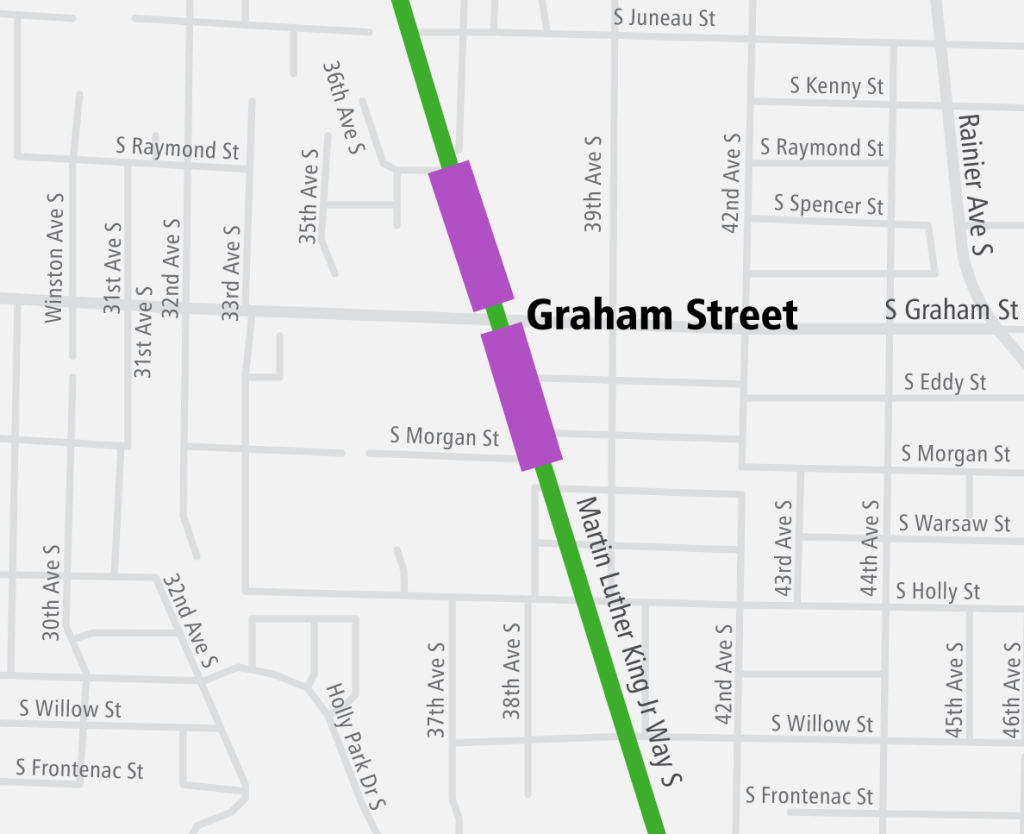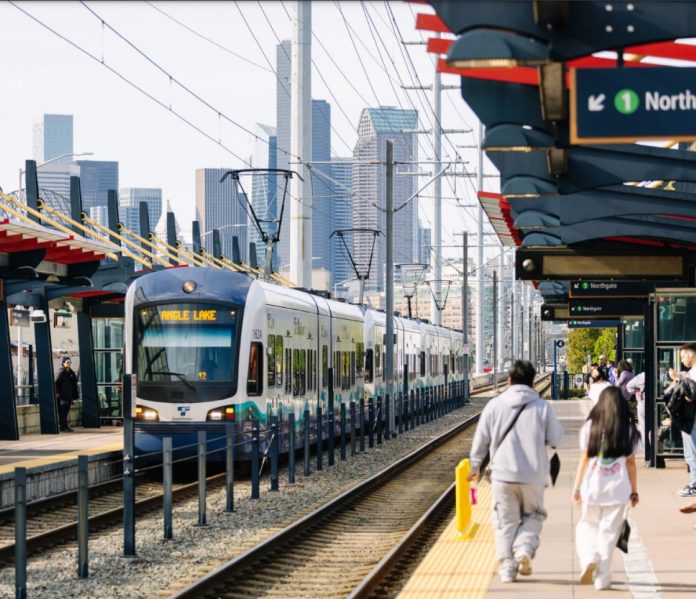
Sound Transit is seeking public feedback on proposed Link light rail infill stations in South Seattle and Tukwila. Stations near Graham Street and Boeing Access Road have been long-standing promises to South End communities, and could finally be realized by 2031.
Last year, Sound Transit commissioned planning efforts for the two stations, hiring planning, engineering, and design firm Kimley-Horn for the job. The firm is tasked with two primary tasks for now, set to transpire over a 16-month period. The first phase — which the agency is currently in — involves screening options to identify a preferred alternative for each station, with a public engagement campaign to better understand community priorities. Once alternatives have been screened, Kimley-Horn will move into environmental review and conceptual engineering up to 10% design.
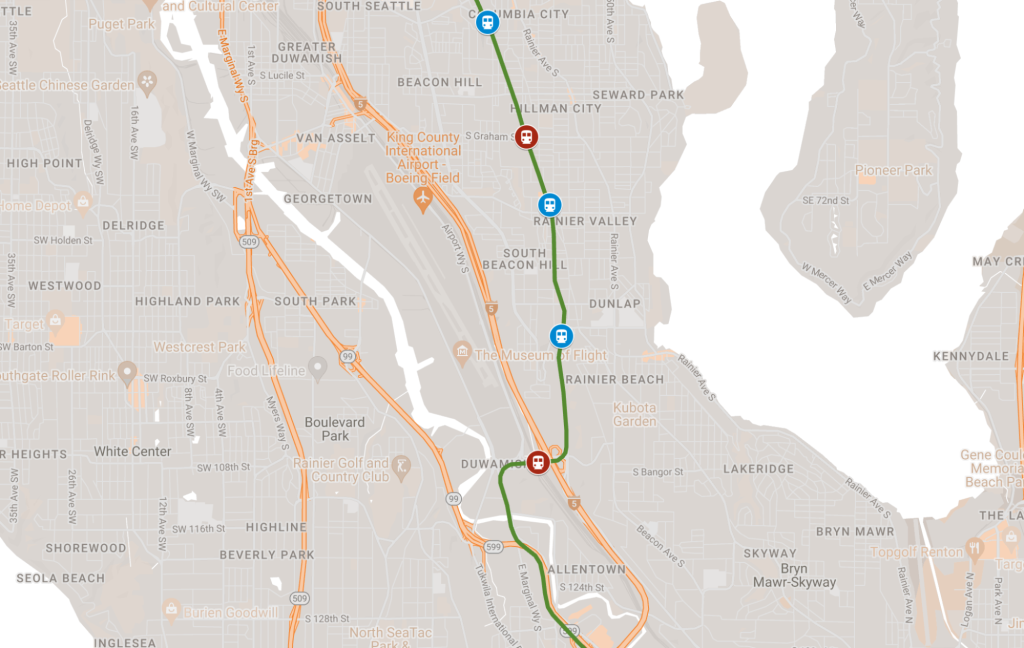
Sound Transit’s respective online open houses for the infill stations are fairly light with details. For both stations, the agency says that multiple factors are considered when siting and designing stations on an active line. Those include things like rail operations (i.e., minimizing disruptions during construction), managing traffic flow, accessibility to the stations, potential property acquisition, and impacts to the environment and nearby businesses and residents. Nonetheless, the open houses do offer a small window into the alternatives that the agency is considering.
Graham Street station alternatives
For the Graham Street station, the agency has identified two potential locations. Both options would place a station at-grade on Martin Luther King Jr Way S near S Graham Street, with one option north of the intersection and one option south of it. A station at this location would help fill a 1.6-mile station gap between Columbia City and Othello stations, and offer direct light rail service for Hillman City, New Holly, and Brighton, giving the Rainier Valley its fifth station.
Project documents indicate Sound Transit anticipates potential modifications to the S Graham Street intersection, widening Martin Luther King Jr. Way S to accommodate the station, and relocating some utilities. Pre-pandemic ridership estimates suggested that the station may see up to 2,500 daily riders, but the planning process is expected to revise these under newer ridership modeling. Recent cost estimates pin the project at around $118 million.
Boeing Access Road station alternatives
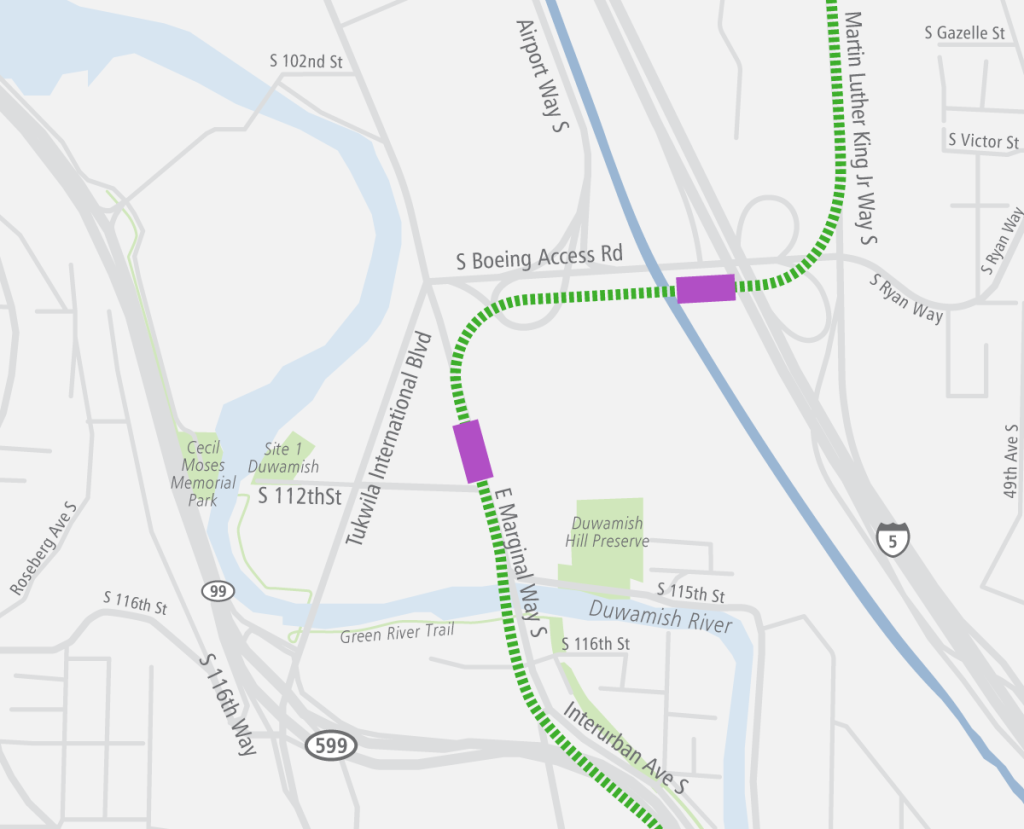
Meanwhile, the Boeing Access Road station project is now billed with two potential elevated station locations: the traditional location on S Boeing Access Road near I-5 and BNSF right-of-way, and a new alternative to the southwest along E Marginal Way S. Adding a station in the area would offer access to industrial and office park areas nearby as well as residential districts, and fill in a 5.5-mile station gap between Rainier Beach and Tukwila International Boulevard stations. Depending upon location, there are also numerous potential bus connections that could be offered, including opportunities to intercept I-5-running bus routes. Sound Transit still has a 300-stall surface parking lot tabbed for the project.
A station on E Marginal Way S would more directly serve developed industrial blocks than a S Boeing Access Road location. It would also be closer to existing bus service, which is a block to the west on Tukwila International Boulevard S with Route 124, and could have I-5 buses routed to it. But development around the potential station is still relatively light.
Alternative station locations further to the south (e.g., Interurban Avenue S/E Marginal Way S, Interurban Avenue S/Macadam Road S, or S 133rd Street/SR 599) could be much more impactful by more directly serving denser areas, including residential districts like Allentown, Riverton, and Latona, while still serving overarching project objectives.
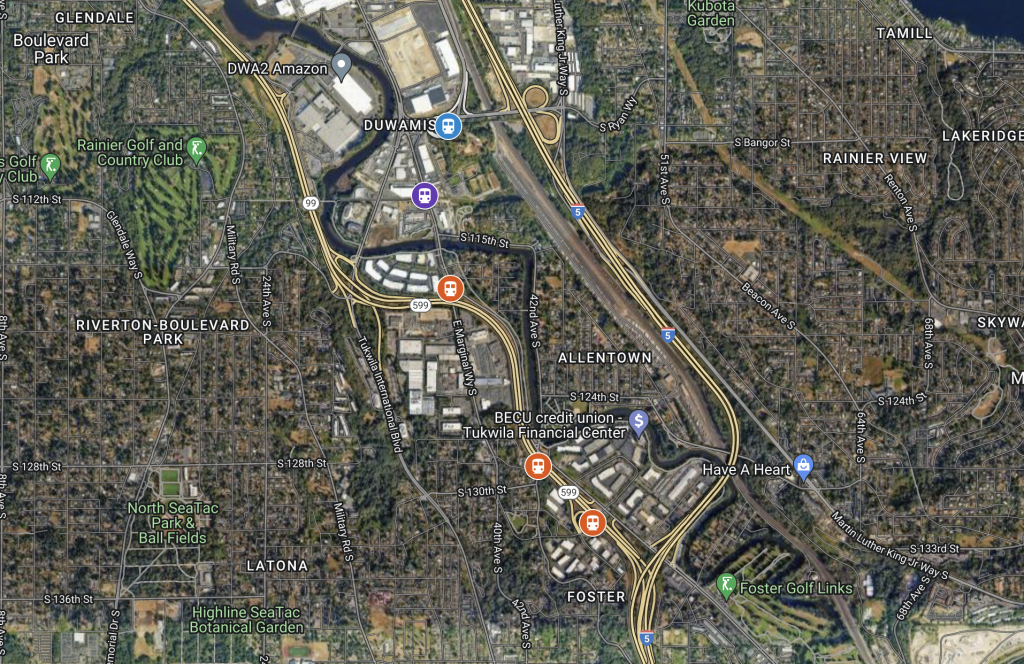
As for a station on S Boeing Access Road itself, its main benefit would be a transfer point if local and I-5 running buses are routed to it. However, the location lacks any real walkshed and bikeshed from it, due to obstacles presented by I-5, topography, a trainyard, and a gun range.
In the past, Sound Transit had contemplated the station as an interchange with Sounder commuter rail service. Official plans for such an interchange were dropped in the early 2000s, but they were resurrected for a brief moment when project elements were being debated for the Sound Transit 3 (ST3) ballot package. That project element ultimately didn’t make the cut in ST3, but if a light rail station is ultimately built at S Boeing Access Road, it would be wise to build future accommodations for an interchange with Sounder or even reallocate funding dedicated to parking facilities to build Sounder station facilities. The newly adopted Seattle Transportation Plan would also seem to support this, too.
Regardless, ridership estimates — again, generated in pre-pandemic times — suggest that a Boeing Access Road station could see up to 2,000 daily riders. Recent cost estimates put the project in the $261 million range.
Looking ahead
The main drawbacks of these infill stations is that they will increase travel times on the 1 Line for southend riders and increase the number of vehicles required to operate 1 Line service. Service on the southern end of the 1 Line is already relatively slow because of at-grade segments in the Rainier Valley, constraining speeds, reducing reliability, and increasing vehicle requirements. Costs, especially in the Boeing Access station’s case, are fairly high for the expected ridership gain offered.
However, improved access to neighborhoods, jobs, and other transit services may well be a worthy tradeoff in adding the infill stations, and they would deliver on decades-long promises to communities.
Through July 28, the public can weigh in on the station alternatives and details about themselves for Sound Transit to factor into planning considerations. Next week, the agency will also hold community open houses. The first will take place on Tuesday, July 16 for the Graham Street station. The event will be held from 4:30pm to 7pm at the Van Asselt Community Center. The following day, on Wednesday, July 17, the agency will then hold an open house at the Tukwila Community Center Banquet Hall from 4:30pm to 7pm.
Stephen is a professional urban planner in Puget Sound with a passion for sustainable, livable, and diverse cities. He is especially interested in how policies, regulations, and programs can promote positive outcomes for communities. With stints in great cities like Bellingham and Cork, Stephen currently lives in Seattle. He primarily covers land use and transportation issues and has been with The Urbanist since 2014.

